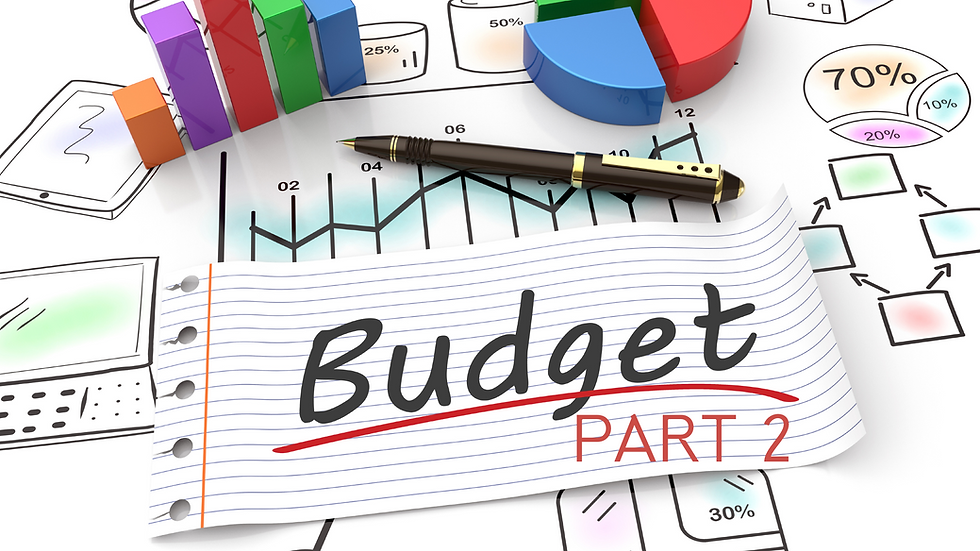A simple guide to the Mini-Budget 2022 (The Growth Plan)
- Veshali Patel
- Oct 3, 2022
- 3 min read
Updated: Oct 10, 2022

The headline message from the Chancellor
The Growth Plan 2022 makes growth the government’s central economic mission, setting a target of reaching a 2.5% trend rate. Sustainable growth will lead to higher wages, greater opportunities and provide sustainable funding for public services. The United Kingdom currently faces a period of high inflation. The government has already taken significant steps to address high energy bills, the biggest challenge, by announcing the Energy Price Guarantee.
To drive higher growth, the government will help expand the supply side of the economy. The Growth Plan sets out action to unlock private investment across the whole of the UK, cut red tape to make it quicker to deliver the UK’s critical infrastructure, make work pay, and support people to get onto the property ladder.
Taken together, reforming the supply side of the economy, cutting and simplifying tax, and maintaining fiscal discipline will drive efficiency, enhance UK competitiveness, and help to boost growth sustainably in the long term.
Some of the measures announced by the Chancellor were as follows.
Rates and allowances

The government will reduce the basic rate of income tax to 19% for England and Wales from April 2023. Also, the additional rate of income tax of 45% is abolished from April 2023, meaning the highest rate of income tax for individuals will be 40%. The announcements to income tax do not automatically affect rates in Scotland. The Scottish Government, which has responsibility for setting bands and rates of income tax in Scotland, will set out its plans for income tax (and other devolved taxes, including the property tax Land & Buildings Transactions Tax) in its draft budget, expected to be published in early December and finalised in February.
Income Tax
The basic rate of income tax will be cut to 19% from April 2023, 12 months earlier than planned. This will apply to non-savings, non-dividend income for taxpayers in England, Wales and Northern Ireland, the savings basic rate which applies to savings income for taxpayers across the UK and the default basic rate which applies to non-savings and non-dividend income of any taxpayer that is not subject to either the main rates or the Scottish rates of income tax.
A four-year transition period for Gift Aid relief will apply, to maintain the income tax basic rate relief at 20% until April 2027. There will also be one-year transitional period for Relief at Source (RAS) pension schemes to permit them to continue to claim tax relief at 20%.
The additional rate of income tax will also be removed from April 2023. This will apply to the additional rate of non-savings, non-dividend income for taxpayers in England, Wales and Northern Ireland. The additional rate for savings, dividends and the default rates will also be removed from April 2023, and this change will apply UK-wide. As the additional rate of income tax will be removed current additional rate taxpayers will also benefit from the Personal Savings Allowance of £500 for higher rate taxpayers.
National Insurance
As previously announced, from April 2022 the rate of National Insurance contributions across all classes (except Class 2 and 3) was increased by 1.25%. The increase in National Insurance contributions for the period 6 April 2022 to 5 November 2022 will apply to:
Class 1 (paid by employees)
Class 4 (paid by self-employed)
Secondary Class 1, 1A and 1B (paid by employers).
Employers will only pay on earnings above the secondary threshold.
However, as announced on 23 September 2022, these rates are reverted to historical rates with effect from 6 November 2022. Furthermore, the new Health and Social Care Levy, which was due to take effect from 6 April 2023 is now scrapped.
There are no changes to the Primary Threshold and Lower Profits Limit which were increased from £9,880 to £12,570 in April 2022. These are aligned with the personal allowance threshold.

The annual National Insurance Primary Threshold and Lower Profits Limit, for employees and the self-employed respectively, was increased from £9,880 to £12,570 from July 2022. From April 2022, self-employed individuals with profits between the Small Profits Threshold and Lower Profits Limit will not pay Class 2 NICs. Over the year as a whole for 2022-23, the Lower Profits Limit, the threshold below which self-employed people do not pay National Insurance, is equivalent to an annualised threshold of £9,880 between April to June, and £12,570 from July 2022.
September 2022
LEGAL NOTICE
This is a basic guide prepared for our clients. It should not be used as a definitive guide since individual circumstances may vary. Specific advice should be obtained, where necessary.



Commentaires